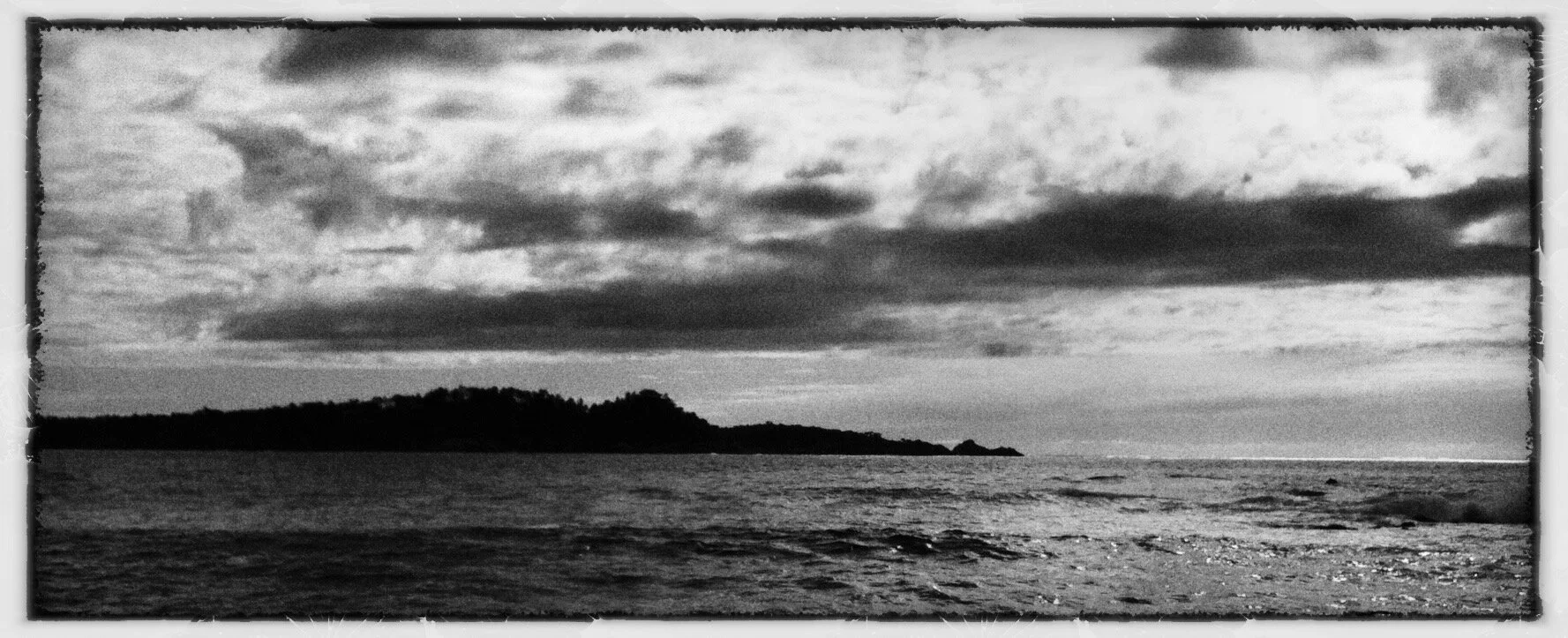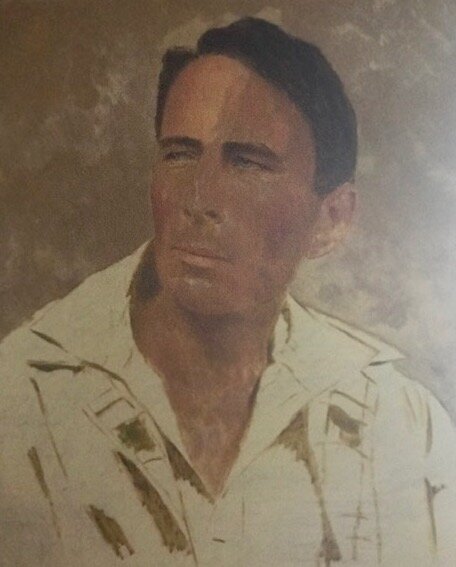ELLIOT RUCHOWITZ-ROBERTS, PRESIDENT, TOR HOUSE FOUNDATION
Just off the brick walkway at the southeast corner of Hawk Tower is a granite sculpture by Gordon Newell (1905-1998) entitled “Eagle for Robinson Jeffers.” The sculpture, which originally sat on the cliffside property of Dorothy and Ralph Atkinson overlooking Bixby Canyon on the Big Sur Coast, was given to the Tor House Foundation by Dorothy Atkinson in 1987.
In the past, while conducting tours of Tor House and Hawk Tower, only on rare occasions did I get to talk about the sculpture, not because of lack of admiration or interest or significance, but because of lack of time—so many poems to recite, so many artifacts to point out, so much of the history of the place as we walked through the parlor, the guest bedroom, the book room and the dining room, then up the steep steps of Hawk Tower with its commanding view of Point Lobos and the Pacific, still, as Jeffers described it, “cold, grim and faithful.”
However, now that we are operating under Shelter-in-Place protocols and doing only outdoor tours, “Eagle for Robinson Jeffers” has become one of my major and favorite stopping points, an occasion not only to talk about Gordon Newell, his profound relationship with Jeffers, and my brief but memorable encounter with Gordon, but also to talk about the profound influence that Jeffers and his poetry has had and continues to have on artists in all fields—sculpture, painting, photography, and music.
An Eagle for Robinson Jeffers by Gordon Newell.
Tor House has, in its archival collection, in addition to Newell’s sculpture, a bronze bust of Jeffers done by Jo Davidson, a terra cotta bust by Arch Garner (from which the bronze bust that sits in the Jeffers Corner at Deetjen’s restaurant in Big Sur was made), portraits of Jeffers by painters Sam Manning, Kate Carew, Lady Countess Claude Kinnoull, Hamilton Achille Wolf, and photographers Edward Weston, Ansel Adams, Morley Baer, and Leigh Weiner, among others. Composers across a wide spectrum have been inspired by Jeffers’ poetry, from John Wineglass, whose “Big Sur: The Night Sun,” composed for the City of Carmel’s Centennial Celebration in 2016 and first performed by the Monterey County Symphony, was inspired, in part by two Jeffers poems, “Return” and “Night”; to Al Jardine whose composition “The Beaks of Eagles” in the Beach Boys album Holland, was inspired by Jeffers’ poem of the same name and included a reading of the poem with lyrical interludes.
Gordon Newell’s introduction to the poetry of Jeffers was accidental. While a student at Occidental College (where Jeffers had also gone to school), Gordon wanted to buy a book for a girl he liked, and settled, he thought, on a volume by Edward Arlington Robinson. Instead, he bought Roan Stallion, Tamar and Other Poems by Robinson Jeffers. After reading “Tamar,” he decided it would not be an appropriate gift, and since he had written in it and could not return it, he gave it to his friend Ward Ritchie.
Ritchie recalls the story in his memoirs, Of Bookmen and Printers: A Gathering of Memories, noting that he, Gordon and their friend Lawrence Clark Powell “began to saturate ourselves with Jeffers’ poems,” a number of which Gordon memorized and loved to recite.
But Jeffers had an even greater influence on Newell: “I got acquainted with Jeffers while walking on the beach at Carmel, below Tor House. I liked the man. We spoke of stones and the building of stone walls. I liked the simplicity of his life, its singleness of purpose and his integrity in living the way he projected in his poetry. He inspired me to try to live as simply myself.” (Big Sur Gazette, Mid-June to Mid-July 1979, p.11)
My acquaintance with Gordon centered around a long walk we took one late winter afternoon. My late wife and I had been invited by our Carmel Highlands neighbor Bill Stewart to a gathering at Big Creek down the coast. There, on property that sat on the westward facing slope of the Santa Lucia Mountains, Bill would be roasting a goat. Gordon was among the many friends that Bill invited.
To get to the property, one had to navigate a dirt-road, mostly single lane, up through steep twists and turns to the ridge top from which a short road dropped to the cabin he had built on the property. Because of the nature of the road, we were asked to carpool up and back.
The afternoon was one of those incredible Big Sur winter afternoons, a Jeffers afternoon to be sure—storm clouds threatening, white caps on the ocean below, the vast Pacific stretching out before us. The meal was, as all meals at Bill’s gatherings were, a feast, the goat perfectly cooked and too many side dishes for one’s plate. As we gathered enjoying the meal, the sky suddenly darkened, and a storm swept through with lightning and thunder and torrents of rain. The house shook with each peal of thunder, and the lightning streaks came from clouds that were eye-level, so it seemed we were actually looking down at the flashes of light.
After the storm passed, after we had enjoyed the meal and the company, we started the process of car-pooling back to Highway 1. My wife went ahead with some friends as I waited for a car which could drive me back down the mountain. When I looked around, there were just three of us left: a fellow with a pick-up, myself, and Gordon. We went out to the truck, squeezed into the front cab, and, as soon as he started up the dirt driveway, now slick and rain-saturated, the car started fish-tailing, and it was clear, to both Gordon and me, that our driver was not experienced in back-road driving. “Whoa!” we both shouted, and he stopped.
“We’ll sit in the back of the truck,” Gordon said to the driver. “That way you’ll have some weight in the back and hopefully get some traction.” So Gordon and I clambered out of the truck’s cab, climbed onto the bed, and sat with our backs to the gate. The driver started up again, and immediately the truck began fish-tailing, this time moving dangerously close to the edge of the road and a steep drop-off.
“Whoa!” we shouted again, this time a little more desperate. When he stopped, we looked at each other, and Gordon asked rhetorically, “Walk?” I nodded yes, and we climbed out of the truck, told the driver we were walking, recommended he wait until the road dried out a little before starting out again, and set off down the mountainside...
on what is one of the most memorable walks in my life. We didn’t talk much, just enjoyed the incredible beauty of the Santa Lucias, the dark clouds still overhead, the ocean stretching to the horizon, evening coming upon us, little periods of light rain, several miles down.
As we turned a bend in the road, there, out in a field, lying this way and that, pieces of marble and granite—columns, slabs, broken fragments. Gordon saw my puzzlement and said, “My quarry,” and then explained that Bill would go to San Francisco whenever he heard that old buildings were being torn down or renovated and buy whatever marble and granite was being discarded, transport them up to this meadow, and leave them there so Gordon would have sculpting materials whenever he needed them.
We reached our cars, just as the slow darkening became night, with no sign of the fellow who had been our car-pool ride.
‘We live the given life, and not the planned,” wrote poet Wendell Berry in one of his Sabbath poems. How true of that walk down the mountainside, of Gordon’s first encounter with Jeffers’ poetry, of, I like to think, the piece of granite Gordon took from his “quarry” for “Eagle for Robinson Jeffers,” of these outdoor tours we now do, exiled from the richness of the interiors of Tor House and Hawk Tower, but still encountering the special qualities of this place that have so inspired artists, that so inspired Gordon.
~ ~ ~ ~
(I am indebted to the recently-published Gordon, by Jim Hunolt & Jeff Garner, 2020, for some of the details of Gordon’s life.)
Artists Honoring Jeffers. left to right: Portrait by Sam Manning, Bronze Bust by Jo Davidson, Portrait by Kate Carew, Terra cotta bust by Arch Garner.





